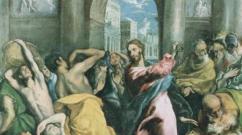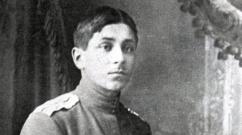DSM is the classification system of the American Psychiatric Association. Diagnostic criteria for ADHD according to the dsm-iv classification Delirium, dementia, amnestic and other cognitive disorders
The Diagnostic and Statistical Manual of Mental Disorders, 4th edition, revised, was published by the American Psychiatric Association in 2000. This paper attempts to evaluate psychiatric illness along five axes.
- Axis I includes most mental disorders, with the exception of personality disorders and mental retardation.
- Axis II includes personality disorders and varying degrees of mental retardation.
- Axis III consists of all associated general health conditions that may be present in a patient with a mental disorder (eg, epilepsy, arterial hypertension, stomach ulcer, infectious diseases etc.).
- Axis IV covers psychosocial and environmental problems that may complicate diagnosis and treatment (eg, divorce, trauma, death of a loved one).
- V-axis describes clinicians' assessments of patients' overall activity level using the Global Assessment of Functional Status (GAF) Scale, where level of functionality is scored from 0 to 100.
Axis I Diagnoses
(Partial listing with some examples)
Disorders usually first diagnosed in infancy, childhood, or adolescence
- Learning disability.
- Attention deficit hyperactivity disorder.
- Autism.
- Tourette's syndrome.
Delirium, dementia, amnestic and other cognitive disorders.
- Delirium caused by alcohol or other psychoactive substances.
- Alzheimer's disease.
- Dementia due to head injury.
Substance use disorders.
- Alcoholism.
- Cocaine abuse.
- Cannabinoid abuse.
- Amphetamine abuse.
- Hallucinogenic intoxication.
Schizophrenia and other psychotic disorders
- Schizophrenia
Mood disorders
- Clinical depression.
- Dysthymic disorder.
- Bipolar disorder type 1.
- Bipolar II disorder
Anxiety disorders
- Panic disorder.
- Phobia
- Post-traumatic stress disorder.
- Social anxiety disorder.
- Obsessive-compulsive disorder.
Psychosomatic disorders
- Somatization disorder.
- Hypochondria.
- Conversion disorder.
- Body dysmorphic disorder.
Factitious disorders
Dissociative disorders
- Dissociative identity disorder (multiple personality disorder)
- Dissociative amnesia.
- Dissociative fugue.
Sexual and gender identity disorders
- Premature ejaculation
- Exhibitionism.
- Pedophilia.
- Fetishism.
- Vaginismus.
Eating disorders
- Anorexia nervosa.
- Bulimia nervosa.
Sleep disorders
- Primary insomnia.
- Somnambulistic disorder.
Impulse disorders
- Intermittent explosive disorder.
- Kleptomania
- Pathological addiction to gambling.
- Trichotillomania (hair and eyebrow pulling).
Adjustment disorders
- With depression.
- With anxiety.
Axis II. Diagnoses of personality disorders
Group A. (Strange, eccentric)
- Paranoid personality disorder.
- Schizoid personality disorder.
- Schizotypal personality disorder.
Group B (Dramatic, emotional)
- Antisocial personality disorder.
- Borderline personality disorder.
- Histrionic personality disorder.
- Narcissistic personality disorder.
Group C (Anxious, frightened)
- Avoidant personality disorder.
- Dependent personality disorder.
- Obsessive-compulsive personality disorder.
DSM IV Cet article concerne le DSM IV et ses particularités.. Pour une approche plus générale, voir Manuel diagnostic et statistique des troubles mentaux. Le DSM IV ((en) Diagnostic and Statistical Manual Revision 4) est un outil de... ... Wikipédia en Français
DSM-IV
DSM IV- Cet article concerne le DSM IV et ses particularités.. Pour une approche plus générale, voir Manuel diagnostic et statistique des troubles mentaux. Le DSM IV ((en) Diagnostic and Statistical Manual Revision 4) est un outil de classification … Wikipédia en Français
DSM- or dsm may refer to: Contents 1 Business 2 Computing 3 Military 4 … Wikipedia
DSM-CC- Saltar a navegación, búsqueda En inglés Digital Storage Media Command and Control (DSM CC). Se trata de un marco de desarrollo para controlar los canales asociados a los flujos de datos de tipo MPEG 1 y MPEG 2 y utiliza un modelo cliente servidor … Wikipedia Español
DSM- can indicate: DSM (code) designation of bacterial strains provided by the German Collection of Microorganisms and Cell Cultures (German: Deutsche Sammlung von Mikroorganismen und Zellkulturen, DSMZ) DSM IV DSM IV (Diagnostic and... ... Wikipedia
DSM-abbrev. Distinguished Service Medal * * * DSM abbr. Distinguished Service Medal. * * * ▪ Dutch company in full Naamloze Vennootschap Dsm (Dutch: DSM Limited Company), state owned Dutch chemical company. Until 1975 the company was known as … Universalium
DSM- Saltar a navegación, búsqueda Las siglas DSM pueden referirse a: En psiquiatría, Manual diagnostico y estadístico de los trastornos mentales. En computación, Distributed Shared Memory, o memorias distribuidas compartidas. También puede tratarse… … Wikipedia Español
DSM- Abreviatura de Diagnostic and Statiscal Manual of Mental Disorders. Con el DSM III R se identifica la versión revisada de la tercera edición del manual. Diccionario Mosby Medicina, Enfermeria y Ciencias de la Salud, Ediciones Hancourt, S.A. 1999 Diccionario medico
DSM-IV- iniciales de Diagnostic and Statiscal Manual of Mental Disorders, revisión IV, una clasificación de las enfermedades mentales Diccionario ilustrado de Terminos Médicos.. Alvaro Galiano. 2010 … Diccionario medico
DSM- DSM, Abkürzung für Diagnostic and Statistical Manual of Mental Disorders. Klassifikationssysteme psychischer Störungen … Universal-Lexikon
Books
- DSM-5 in Action , Sophia Dziegielewski F.. Full exploitation of the DSM-5 allows for more comprehensive care By demystifying the DSM-5, author Sophia Dziegielewski goes beyond the traditional diagnostic assessment and suggests both… Buy for 6634.03 RUR e-book
- DSM-5 Learning Companion for Counselors, Casey A. Barrio Minton. Written for an audience that includes private practitioners; counselors working in mental health centers, psychiatric hospitals, employee assistance programs, and other community settings; as…
Paranoid
Schizoid
Schizotypal
Cluster B (theatrical, emotional or fluctuating disorders):
Antisocial
Border
Hysterical
Narcissistic
Cluster C (anxiety and panic disorders):
Avoidant
Dependent
Obsessive-compulsive
Personality disorders
This section begins with a general definition of personality disorder that applies to each of the 10 specific disorders. All personality disorders are coded on Axis II.
General diagnostic criteria for personality disorder.
A. A long-term pattern of internal experiences and behavior that clearly deviates from cultural expectations. This pattern appears in two (or more) of the following areas:
1 – cognitive sphere (i.e. ways of perceiving or understanding oneself, other people and current events),
2 – affective sphere (i.e. range, intensity, lability, acceptability of emotional reactions),
3 – interpersonal functioning,
4 – impulse control.
B. This long-term pattern is inflexible and pervasive across a wide range of situations of personal and social functioning.
C. This pattern results in overt clinical impairment or impairment in social, occupational, or other important areas of functioning.
D. This pattern is stable and long-lasting, and its establishment can be traced back to at least adolescence or young adulthood.
E. This pattern is not a manifestation or consequence of another mental illness.
F. This pattern is not a direct psychological result of substance use (eg, drugs or medications) or a general health condition (eg, head injury).
Cluster a.
301.0 Paranoid personality disorder
A. Deep distrust and suspicion of others, with an interpretation of the motives of their behavior as malevolent, beginning in youth and present in a variety of contexts, as determined by four (or more) of the following factors:
1- Suspicion, without reasonable grounds, that others are exploiting, harming or deceiving him/her
2- preoccupation with unjustified doubts about the fidelity or reliability of friends or partners
3- reluctance to disclose to others due to unjustified fears that the information received will be maliciously used against him/her
4- looking for hidden meanings or threatening signs in innocuous remarks or events
5- constant hostility, i.e. refusal to forgive insults, insults, ridicule
6- feeling attacks on one's character or reputation that are not visible to others, with an immediate reaction of anger or counterattack
7- repeated suspicions, without sufficient grounds, of the fidelity of a spouse or sexual partner.
B. Does not occur exclusively in association with schizophrenia, mood disorders with psychotic features, other psychotic disorders, and is not a direct physiological result of a medical condition.
Note: If these factors occur before the onset of schizophrenia,” add “premorbid,” for example, “paranoid personality disorder (premorbid).”
* (i.e., DSM fifth edition), the next generation of the classifier.According to DSM-IV, the following factors (“axes”) are considered when formulating a full diagnosis:
- presence or absence
- mental illness (axis I),
- background psychopathy (axis II),
- somatic disease (axis III),
- aggravating psychosocial factors (axis IV),
- general level of adaptation (axis V).
The manual uses ICD-9-CM (ICD-9-CM) codes to codify disorders.
Description
First axis(axis I) includes transient, reversible disorders that come and go, such as phobias, generalized anxiety disorder (GAD), depression, addictions, etc. These disorders are “symptomatic”, as patients with disorders on this axis often find themselves the presence of mental disorders (“symptoms”) that bother them and require treatment.
Second axis(axis II) includes personality disorders and other stable, virtually reversible long-term mental disorders such as mental retardation or retardation.
The attitude of patients towards violations of the First Axis is ego-dystonic, that is, alien, not characteristic of the ego, while violations of the Second Axis, including personality disorders, are ego-syntonic and are considered by patients as their inherent characterological characteristics and/or natural reactions to the current situation.
Third axis(axis III) contains a list of physical disorders or conditions that may be observed in a patient with mental disorders, that is, all somatic and psychosomatic diseases (for example, epilepsy, arterial hypertension, gastric ulcer, infectious diseases, etc.). Axis III contains codes borrowed from the International Classification of Diseases (ICD).
Fourth axis(axis IV) includes past psychosocial stress (eg, divorce, trauma, death of someone close to you) related to the disease; are ranked (separately for adults and separately for children and adolescents) on a scale with a continuum from 1 (no stress) to 6 (catastrophic stress).
Fifth axis(axis V) characterizes the highest level of functioning observed in the patient over the past year (for example, in social, professional activities and mental activity); ranking on a scale ranging from 100 (upper limit) to 1 (severe impairment of function).
Story
- - DSM-II (7th edition with homosexuality excluded)
- - DSM-III-R (third edition, revised)
- - DSM-IV-TR (TR - English. text revision; fourth edition, revised)
- - DSM-5 (development began in 1999, published May 18, 2013)
The addition or removal of diseases to the DSM is done by vote of psychiatrists.
Criticism
Of the 170 people who contributed to DSM-IV and DSM-IV-TR, ninety-five (56%) had financial ties to pharmaceutical companies, according to a study published in the journal Psychotherapy and Psychosomatics. Of all the psychiatrists who contributed to the development of the DSM Mood Disorders and Schizophrenia and Other Psychotic Disorders categories, 100% had ties to pharmaceutical companies.
Sources
- American Psychiatric Association (1987) “Diagnostic and statistical manual of mental disorders” (3rd ed., rev.). Washington. DC: APA.
- American Psychiatric Association (1994) Diagnostic and Statistical Manual of Mental Disorders (4th ed.) (DSM-IV). Washington, DC: APA.
- American Psychiatric Association.“Diagnostic and statistical manual of mental disorders, Fourth Edition, Text Revision: DSM-IV-TR" - Washington, DC: American Psychiatric Publishing, Inc., 2000. - ISBN 0890420254.
Write a review of the article "DSM-IV"
Literature
- Korolenko Ts. P., Dmitrieva N. V. Personality and dissociative disorders: expanding the boundaries of diagnosis and treatment. - Novosibirsk: NGPU Publishing House, 2006. P. 6-7. ISBN 5-85921-548-7
- Kaplan G.I., Sadok B.J. Clinical psychiatry (from a synopsis on psychiatry) in 2 volumes, volume 1. - M.: Medicine, 1998, 672 pp.: ill. pp. 30, 31, 53, 54. ISBN 5-225-00533-0
- Regier DA, Kuhl EA, Kupfer DJ// World Psychiatry. - June 2013. - T. 12, No. 2. - pp. 88-94.
See also
- ICD-10 - International Statistical Classification of Diseases and Related Health Problems, 10th Revision
- CCMD (Chinese Classification of Mental Disorders) - Chinese classification of mental disorders
- Codes from DSM-IV (English), Codes from DSM-IV in alphabetical order (English)
Notes
Links
Criticism
- Spiegel A.(English) . The New Yorker (3 January 2005). - About the development of DSM. Retrieved September 6, 2009. .
- Pavlovets V.. Private correspondent (January 11, 2010). - Criticism of DSM-IV and DSM-V. Retrieved January 21, 2010. .
Excerpt describing DSM-IV
“You come in if you need anything, everyone at headquarters will help...” said Zherkov.Dolokhov grinned.
- You better not worry. I won’t ask for anything I need, I’ll take it myself.
- Well, I’m so...
- Well, so am I.
- Goodbye.
- Be healthy...
... and high and far,
On the home side...
Zherkov touched his spurs to the horse, which, getting excited, kicked three times, not knowing which one to start with, managed and galloped off, overtaking the company and catching up with the carriage, also to the beat of the song.
Returning from the review, Kutuzov, accompanied by the Austrian general, went into his office and, calling the adjutant, ordered to be given some papers relating to the state of the arriving troops, and letters received from Archduke Ferdinand, who commanded the advanced army. Prince Andrei Bolkonsky entered the commander-in-chief's office with the required papers. Kutuzov and an Austrian member of the Gofkriegsrat sat in front of the plan laid out on the table.
“Ah...” said Kutuzov, looking back at Bolkonsky, as if with this word he was inviting the adjutant to wait, and continued the conversation he had begun in French.
“I’m just saying one thing, General,” Kutuzov said with a pleasant grace of expression and intonation, which forced you to listen carefully to every leisurely spoken word. It was clear that Kutuzov himself enjoyed listening to himself. “I only say one thing, General, that if the matter depended on my personal desire, then the will of His Majesty Emperor Franz would have been fulfilled long ago.” I would have joined the Archduke long ago. And believe my honor, it would be a joy for me personally to hand over the highest command of the army to a more knowledgeable and skilled general than I am, of which Austria is so abundant, and to relinquish all this heavy responsibility. But circumstances are stronger than us, General.
And Kutuzov smiled with an expression as if he was saying: “You have every right not to believe me, and even I don’t care at all whether you believe me or not, but you have no reason to tell me this. And that’s the whole point.”
The Austrian general looked dissatisfied, but could not help but respond to Kutuzov in the same tone.
“On the contrary,” he said in a grumpy and angry tone, so contrary to the flattering meaning of the words he was saying, “on the contrary, your Excellency’s participation in the common cause is highly valued by His Majesty; but we believe that the present slowdown deprives the glorious Russian troops and their commanders-in-chief of the laurels that they are accustomed to reaping in battles,” he finished his apparently prepared phrase.
Kutuzov bowed without changing his smile.
“And I am so convinced and, based on the last letter with which His Highness Archduke Ferdinand honored me, I assume that the Austrian troops, under the command of such a skillful assistant as General Mack, have now won a decisive victory and no longer need our help,” said Kutuzov.
The general frowned. Although there was no positive news about the defeat of the Austrians, there were too many circumstances that confirmed the general unfavorable rumors; and therefore Kutuzov’s assumption about the victory of the Austrians was very similar to ridicule. But Kutuzov smiled meekly, still with the same expression, which said that he had the right to assume this. Indeed, the last letter he received from Mac's army informed him of the victory and the most advantageous strategic position of the army.
“Give me this letter here,” said Kutuzov, turning to Prince Andrei. - If you please see. - And Kutuzov, with a mocking smile at the ends of his lips, read in German to the Austrian general the following passage from a letter from Archduke Ferdinand: “Wir haben vollkommen zusammengehaltene Krafte, nahe an 70,000 Mann, um den Feind, wenn er den Lech passirte, angreifen und schlagen zu konnen. Wir konnen, da wir Meister von Ulm sind, den Vortheil, auch von beiden Uferien der Donau Meister zu bleiben, nicht verlieren; mithin auch jeden Augenblick, wenn der Feind den Lech nicht passirte, die Donau ubersetzen, uns auf seine Communikations Linie werfen, die Donau unterhalb repassiren und dem Feinde, wenn er sich gegen unsere treue Allirte mit ganzer Macht wenden wollte, seine Absicht alabald vereitelien. Wir werden auf solche Weise den Zeitpunkt, wo die Kaiserlich Ruseische Armee ausgerustet sein wird, muthig entgegenharren, und sodann leicht gemeinschaftlich die Moglichkeit finden, dem Feinde das Schicksal zuzubereiten, so er verdient.” [We have quite concentrated forces, about 70,000 people, so that we can attack and defeat the enemy if he crosses Lech. Since we already own Ulm, we can retain the benefit of command of both banks of the Danube, therefore, every minute, if the enemy does not cross the Lech, cross the Danube, rush to his communication line, and below cross the Danube back to the enemy, if he decides to turn all his power on our faithful allies, prevent his intention from being fulfilled. In this way we will cheerfully await the time when the imperial Russian army will be completely prepared, and then together we will easily find the opportunity to prepare for the enemy the fate he deserves.”]
Kutuzov sighed heavily, ending this period, and looked attentively and affectionately at the member of the Gofkriegsrat.
“But you know, Your Excellency, the wise rule is to assume the worst,” said the Austrian general, apparently wanting to end the jokes and get down to business.
He involuntarily looked back at the adjutant.
“Excuse me, General,” Kutuzov interrupted him and also turned to Prince Andrei. - That's it, my dear, take all the reports from our spies from Kozlovsky. Here are two letters from Count Nostitz, here is a letter from His Highness Archduke Ferdinand, here is another,” he said, handing him several papers. - And from all this, purely, on French, draw up a memorandum, a note, for the visibility of all the news that we have about the actions Austrian army had. Well, then, introduce him to his Excellency.
Prince Andrei bowed his head as a sign that he understood from the first words not only what was said, but also what Kutuzov wanted to tell him. He collected the papers, and, making a general bow, quietly walking along the carpet, went out into the reception room.
Despite the fact that not much time has passed since Prince Andrei left Russia, he has changed a lot during this time. In the expression of his face, in his movements, in his gait, the former pretense, fatigue and laziness were almost not noticeable; he had the appearance of a man who does not have time to think about the impression he makes on others, and is busy doing something pleasant and interesting. His face expressed more satisfaction with himself and those around him; his smile and gaze were more cheerful and attractive.
Kutuzov, whom he caught up with in Poland, received him very kindly, promised him not to forget him, distinguished him from other adjutants, took him with him to Vienna and gave him more serious assignments. From Vienna, Kutuzov wrote to his old comrade, the father of Prince Andrei:
“Your son,” he wrote, “shows hope of becoming an officer, out of the ordinary in his studies, firmness and diligence. I consider myself lucky to have such a subordinate at hand.”
At Kutuzov's headquarters, among his comrades and colleagues, and in the army in general, Prince Andrei, as well as in St. Petersburg society, had two completely opposite reputations.
Some, a minority, recognized Prince Andrei as something special from themselves and from all other people, expected great success from him, listened to him, admired him and imitated him; and with these people Prince Andrei was simple and pleasant. Others, the majority, did not like Prince Andrei, considered him a pompous, cold and unpleasant person. But with these people, Prince Andrei knew how to position himself in such a way that they respected him and even feared him.
Coming out of Kutuzov’s office into the reception area, Prince Andrei with papers approached his comrade, the adjutant on duty Kozlovsky, who was sitting by the window with a book.
- Well, what, prince? – asked Kozlovsky.
“We were ordered to write a note explaining why we shouldn’t go ahead.”
- Why?
Prince Andrey shrugged his shoulders.
- No news from Mac? – asked Kozlovsky.
- No.
“If it were true that he was defeated, then the news would come.”
“Probably,” said Prince Andrei and headed towards the exit door; but at the same time, a tall, obviously visiting, Austrian general in a frock coat, with a black scarf tied around his head and with the Order of Maria Theresa around his neck, quickly entered the reception room, slamming the door. Prince Andrei stopped.
- General Chief Kutuzov? – the visiting general quickly said with a sharp German accent, looking around on both sides and walking without stopping to the office door.
“The general in chief is busy,” said Kozlovsky, hastily approaching the unknown general and blocking his path from the door. - How would you like to report?
The unknown general looked contemptuously down at the short Kozlovsky, as if surprised that he might not be known.
“The general in chief is busy,” Kozlovsky repeated calmly.
The general's face frowned, his lips twitched and trembled. He took out a notebook, quickly drew something with a pencil, tore out a piece of paper, gave it to him, walked quickly to the window, threw his body on a chair and looked around at those in the room, as if asking: why are they looking at him? Then the general raised his head, craned his neck, as if intending to say something, but immediately, as if casually starting to hum to himself, he made a strange sound, which immediately stopped. The door to the office opened, and Kutuzov appeared on the threshold. The general with his head bandaged, as if running away from danger, bent down and approached Kutuzov with large, fast steps of his thin legs.













